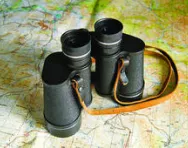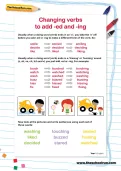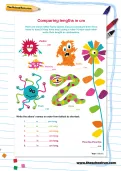Important update from TheSchoolRun
For the past 13 years, TheSchoolRun has been run by a small team of mums working from home, dedicated to providing quality educational resources to primary school parents. Unfortunately, rising supplier costs and falling revenue have made it impossible for us to continue operating, and we’ve had to make the difficult decision to close. The good news: We’ve arranged for another educational provider to take over many of our resources. These will be hosted on a new portal, where the content will be updated and expanded to support your child’s learning.
What this means for subscribers:
- Your subscription is still active, and for now, you can keep using the website as normal — just log in with your usual details to access all our articles and resources*.
- In a few months, all resources will move to the new portal. You’ll continue to have access there until your subscription ends. We’ll send you full details nearer the time.
- As a thank you for your support, we’ll also be sending you 16 primary school eBooks (worth £108.84) to download and keep.
A few changes to be aware of:
- The Learning Journey weekly email has ended, but your child’s plan will still be updated on your dashboard each Monday. Just log in to see the recommended worksheets.
- The 11+ weekly emails have now ended. We sent you all the remaining emails in the series at the end of March — please check your inbox (and spam folder) if you haven’t seen them. You can also follow the full programme here: 11+ Learning Journey.
If you have any questions, please contact us at [email protected]. Thank you for being part of our journey it’s been a privilege to support your family’s learning.
*If you need to reset your password, it will still work as usual. Please check your spam folder if the reset email doesn’t appear in your inbox.
Key Stage 1 geography – what’s involved?

In KS1 geography lessons, children are taught to:
- Name and locate the world’s seven continents and five oceans.
- Name, locate and identify characteristics of the four countries and capital cities of the United Kingdom and its surrounding seas.


Start the Year 1 Learning Programme!
- Weekly maths & English worksheets direct to your inbox
- Follows the National Curriculum
- Keeps your child's learning on track
- Understand similarities and differences between life in different countries.
- Look at seasonal and daily weather patterns in the UK and compare them with hotter and colder countries.
- Use basic geographical vocabulary to refer to physical features and human features.
Support your child's learning at home
- Provide your child with a map, atlas or globe and encourage them to use this to find out more about places and environments. Which countries are hot or cold? Can your child identify where different people come from, perhaps children in his or her class?
- Use maps, atlases and globes.
- Use simple compass directions.
- Use aerial photos to recognise human and physical features.
- Devise a simple map.
- Use and construct basic symbols in a key.
- Study the geography of their school and its grounds.
- Read stories that include different geographical locations and ideas. Ideas include The Jungle Book (tropical rainforest) and Aladdin (desert).
- Find the geography in your home. Where in the world did your furniture, ornaments or kitchenware come from? What materials were used? How far did they travel? Are there any environmental issues?
- Is there geography in your family tree?
- Where did the vegetables you’re eating come from?
- Develop a geographical scrapbook. Take a walk in your local area and collect anything that represents or reflects the locality – people, plants, buildings, landmarks and so forth. Create a map.
- Use postcards, posters and pictures to discuss other places. Think about where the image was taken. Are there any people in the image? What might their lives be like? What are they doing? What might they be saying? What objects are in the image and what are they for? What is the environment like?